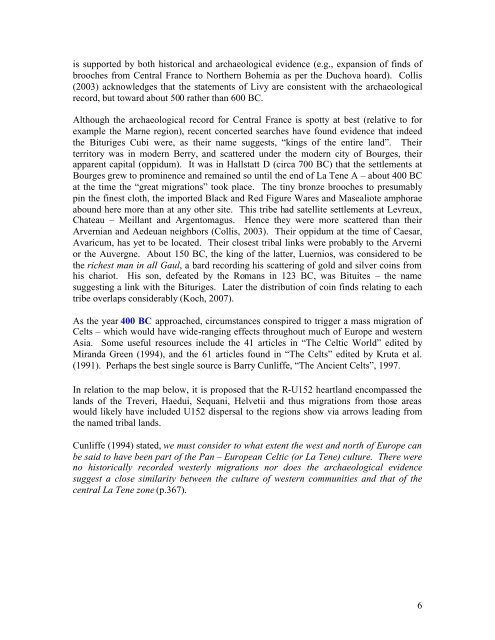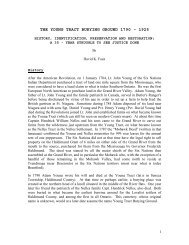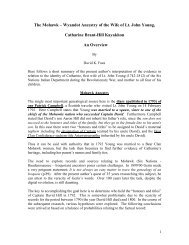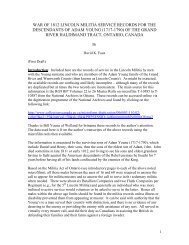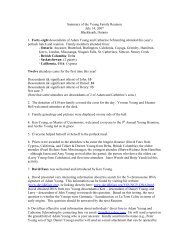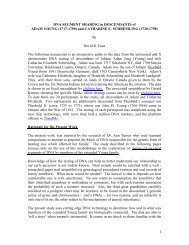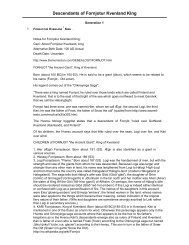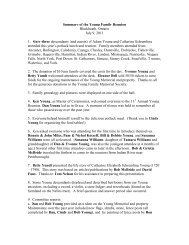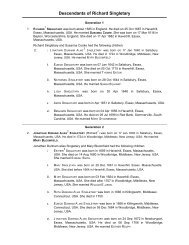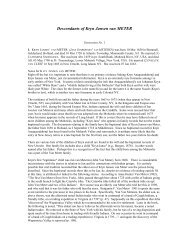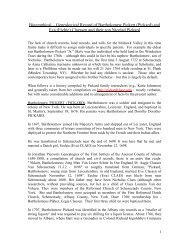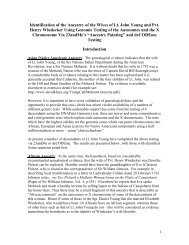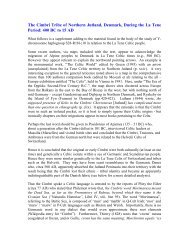Part 2 - Davidkfaux.org
Part 2 - Davidkfaux.org
Part 2 - Davidkfaux.org
Create successful ePaper yourself
Turn your PDF publications into a flip-book with our unique Google optimized e-Paper software.
is supported by both historical and archaeological evidence (e.g., expansion of finds ofbrooches from Central France to Northern Bohemia as per the Duchova hoard). Collis(2003) acknowledges that the statements of Livy are consistent with the archaeologicalrecord, but toward about 500 rather than 600 BC.Although the archaeological record for Central France is spotty at best (relative to forexample the Marne region), recent concerted searches have found evidence that indeedthe Bituriges Cubi were, as their name suggests, “kings of the entire land”. Theirterritory was in modern Berry, and scattered under the modern city of Bourges, theirapparent capital (oppidum). It was in Hallstatt D (circa 700 BC) that the settlements atBourges grew to prominence and remained so until the end of La Tene A – about 400 BCat the time the “great migrations” took place. The tiny bronze brooches to presumablypin the finest cloth, the imported Black and Red Figure Wares and Masealiote amphoraeabound here more than at any other site. This tribe had satellite settlements at Levreux,Chateau – Meillant and Argentomagus. Hence they were more scattered than theirArvernian and Aedeuan neighbors (Collis, 2003). Their oppidum at the time of Caesar,Avaricum, has yet to be located. Their closest tribal links were probably to the Arvernior the Auvergne. About 150 BC, the king of the latter, Luernios, was considered to bethe richest man in all Gaul, a bard recording his scattering of gold and silver coins fromhis chariot. His son, defeated by the Romans in 123 BC, was Bituites – the namesuggesting a link with the Bituriges. Later the distribution of coin finds relating to eachtribe overlaps considerably (Koch, 2007).As the year 400 BC approached, circumstances conspired to trigger a mass migration ofCelts – which would have wide-ranging effects throughout much of Europe and westernAsia. Some useful resources include the 41 articles in “The Celtic World” edited byMiranda Green (1994), and the 61 articles found in “The Celts” edited by Kruta et al.(1991). Perhaps the best single source is Barry Cunliffe, “The Ancient Celts”, 1997.In relation to the map below, it is proposed that the R-U152 heartland encompassed thelands of the Treveri, Haedui, Sequani, Helvetii and thus migrations from those areaswould likely have included U152 dispersal to the regions show via arrows leading fromthe named tribal lands.Cunliffe (1994) stated, we must consider to what extent the west and north of Europe canbe said to have been part of the Pan – European Celtic (or La Tene) culture. There wereno historically recorded westerly migrations nor does the archaeological evidencesuggest a close similarity between the culture of western communities and that of thecentral La Tene zone (p.367).6


